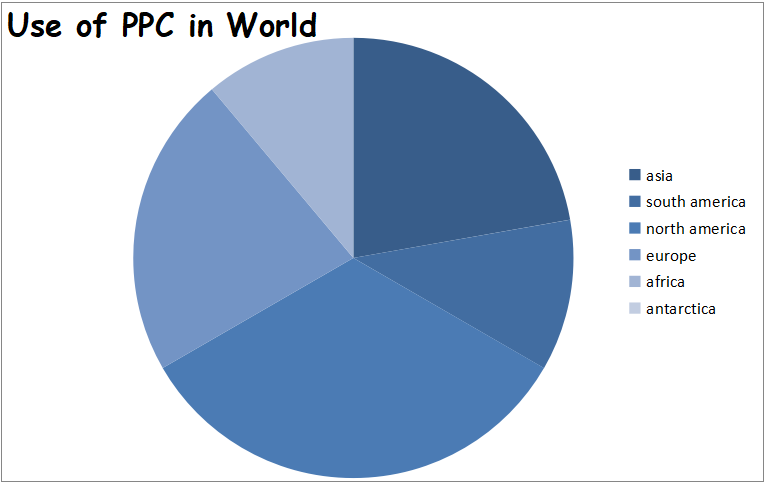PPC
May 17, 2024

What is PPC?
PPC stands for “Pay-Per-Click.” It’s a digital marketing model where advertisers pay a fee each time one of their ads is clicked. Essentially, it’s a way of buying visits to your site rather than attempting to “earn” those visits organically through methods like SEO. PPC is commonly associated with search engine advertising, such as Google Ads or Bing Ads, where advertisers bid on keywords relevant to their target audience. When users search for those keywords, the advertiser’s ad may appear at the top or bottom of the search engine results page (SERP). If the user clicks on the ad, the advertiser pays the search engine a small fee. PPC can also include display advertising on websites, remarketing campaigns, and advertising on social media platforms.
We have following things to discuss related to PPC.( Pay-per-Click)
Search Engine Advertising:
Search engine advertising is a form of online advertising where ads are displayed on search engine results pages (SERPs) in response to user queries. Here’s an elaboration on how it works:
- Keyword Targeting: Advertisers select keywords or phrases relevant to their products or services. When users search for those keywords, the search engine identifies the relevant ads to display based on the advertiser’s bid, ad quality, and other factors.
- Ad Auction: When a user enters a search query, the search engine runs an auction to determine which ads to display and in what order. The auction takes into account factors such as the advertiser’s bid (the amount they’re willing to pay for a click), ad relevance, and expected click-through rate (CTR).
- Ad Positioning: Ads are typically displayed above or below the organic search results, as well as sometimes on the side of the page. The position of an ad is determined by factors such as bid amount and ad quality score, which is influenced by factors like ad relevance, landing page quality, and historical performance.
- Ad Copy and Extensions: Advertisers create ad copy that includes headlines, descriptions, and URLs designed to attract clicks from users. They can also use ad extensions to provide additional information such as phone numbers, location information, or links to specific pages within their website.
- Cost Structure: In PPC advertising, advertisers only pay when users click on their ads, hence the name “pay-per-click.” The cost per click (CPC) varies depending on factors such as keyword competitiveness, ad quality, and bidding strategy.
- Campaign Management: Advertisers use advertising platforms like Google Ads or Bing Ads to create and manage their search engine advertising campaigns. They can set budgets, adjust bids, target specific demographics or geographic locations, and track performance metrics such as clicks, impressions, and conversions.
Display Advertising:
Display advertising is a form of online advertising that involves placing graphical or multimedia ads on websites, apps, or social media platforms. Here’s an elaboration on how it works:
Ad Creation: Advertisers create visually engaging ads in various formats, such as images, videos, animations, or interactive elements. These ads can be customized to match the look and feel of the publisher’s website or app, or they can stand out with bold designs and messaging.
Ad Placement: Advertisers use advertising networks or ad exchanges to display their ads across a wide range of websites, apps, or social media platforms. These networks and exchanges connect advertisers with publishers who have available ad space on their digital properties. Ad placement can be targeted based on factors such as demographics, interests, browsing behavior, and contextual relevance.
Targeting Options: Advertisers can target their ads to specific audiences based on various criteria, including demographics (such as age, gender, income, or education level), interests (such as hobbies, lifestyle, or purchasing behavior), geographic location, device type, and more. This targeting helps advertisers reach the most relevant users for their products or services.
Retargeting: Display advertising also includes retargeting, which involves showing ads to users who have previously visited a website or interacted with a brand but did not complete a desired action, such as making a purchase. Retargeting ads can help re-engage these users and encourage them to return to the website to complete the desired action.
Cost Structure: Display advertising typically operates on cost-per-thousand-impressions (CPM) or cost-per-click (CPC) pricing model. Advertisers pay based on the number of impressions their ads receive (CPM) or the number of clicks they generate (CPC). The cost can vary depending on factors such as ad placement, targeting options, ad format, and competition.
Ad Tracking and Optimization: Advertisers track the performance of their display advertising campaigns using metrics such as impressions, clicks, click-through rate (CTR), conversion rate, and return on investment (ROI). They use this data to optimize their campaigns by adjusting targeting parameters, ad creative, bidding strategies, and budget allocations to improve performance and achieve their advertising goals.
Social Media Advertising:
Social media advertising is a form of online advertising that involves placing ads on social media platforms to promote products, services, or brands. Here’s an elaboration on how it works:
Ad Creation: Advertisers create visually appealing ads that align with the style and format of the chosen social media platform. These ads can include images, videos, carousels, slideshows, or other interactive elements. Ad creatives are designed to capture the attention of users as they scroll through their social media feeds.
Ad Placement: Social media advertising platforms offer various placement options for ads, including the news feed, stories, right-hand column, or in-stream (within videos). Advertisers can also choose to display ads on specific platforms within the social media ecosystem, such as Facebook, Instagram, Twitter, LinkedIn, Pinterest, Snapchat, or TikTok.
Targeting Options: Social media advertising provides robust targeting options to help advertisers reach their desired audience. Targeting criteria may include demographics (such as age, gender, location, education, or income), interests (such as hobbies, preferences, or behaviors), psychographics (such as values, attitudes, or lifestyle), and connection status (such as followers, friends, or email subscribers). Advertisers can also create custom audiences based on website visitors, app users, or customer lists, as well as lookalike audiences that resemble their existing customers.
Ad Formats: Each social media platform offers a variety of ad formats to suit different advertising objectives and creative preferences. For example:
– Facebook and Instagram: Single image or video ads, carousel ads, collection ads, slideshow ads, or augmented reality (AR) ads.
– Twitter: Promoted tweets, promoted accounts, or promoted trends.
– LinkedIn: Sponsored content, sponsored InMail, or text ads.
– Pinterest: Promoted pins, promoted carousels, or promoted video pins.
– Snapchat: Snap ads, story ads, augmented reality (AR) lenses, or filters.
– TikTok: In-feed ads, branded hashtag challenges, branded effects, or top-view ads.Campaign Management: Advertisers use self-serve advertising platforms provided by social media networks to create, manage, and optimize their advertising campaigns. They can set campaign objectives, define targeting criteria, allocate budgets, schedule ad placements, and track performance metrics such as impressions, clicks, engagement, conversions, and return on ad spend (ROAS).
Ad Tracking and Optimization: Social media advertising platforms provide insights and analytics tools to track the performance of ad campaigns in real-time. Advertisers can monitor key performance indicators (KPIs), analyze audience demographics and behavior, A/B test different ad creative or targeting strategies, and make data-driven optimizations to improve campaign effectiveness and achieve their advertising goals.
Remarketing:
Remarketing, also known as retargeting, is a digital advertising strategy that involves targeting ads to users who have previously interacted with a website, app, or brand but did not complete a desired action, such as making a purchase or filling out a form. Here’s an elaboration on how it works:
Tracking Pixels or Cookies: To implement remarketing, advertisers place tracking pixels or cookies on their website or app. These tracking technologies collect data about user interactions, such as pages visited, products viewed, items added to cart, or forms submitted.
Audience Segmentation: Based on the data collected, advertisers can segment their audience into specific groups or categories. For example, they may create audiences of users who visited certain product pages but didn’t make a purchase, abandoned their shopping carts, or spent a significant amount of time browsing the website.
Ad Campaign Setup: Advertisers create remarketing campaigns within advertising platforms such as Google Ads, Facebook Ads, or other display advertising networks. They design ads tailored to the segmented audience groups, with messaging and offers intended to re-engage users and encourage them to return to the website to complete the desired action.
Ad Targeting: Remarketing campaigns target ads to users within the segmented audience groups as they browse other websites, apps, or social media platforms that are part of the advertising network. Advertisers can use various targeting options, such as demographic information, interests, behaviors, or contextual relevance, to refine their ad targeting and reach the most relevant audience segments.
Ad Personalization: Advertisers can personalize remarketing ads based on the user’s previous interactions with the website or app. For example, they may show ads featuring products or services that the user viewed but didn’t purchase, or they may offer special promotions or discounts to incentivize the user to complete the desired action.
Frequency Capping: To prevent ad fatigue and annoyance, advertisers can set frequency caps to limit the number of times a user sees remarketing ads within a certain time period. This helps maintain a positive user experience and prevents overexposure to the same ads.
Ad Tracking and Optimization: Advertisers track the performance of their remarketing campaigns using metrics such as impressions, clicks, click-through rate (CTR), conversion rate, and return on investment (ROI). They analyze campaign data to identify which audience segments and ad creative are most effective at driving conversions, and they make data-driven optimizations to improve campaign performance over time.

Conclusion
In conclusion, PPC (Pay-Per-Click) advertising is a powerful digital marketing strategy that allows advertisers to display ads on various online platforms and pay only when users click on their ads. Here are the key points to remember about PPC:
Cost-Effective: PPC offers a cost-effective advertising model where advertisers pay only for actual clicks on their ads, making it a measurable and scalable marketing strategy.
Targeted Reach: PPC allows advertisers to target specific audiences based on demographics, interests, behaviors, and keywords, ensuring that ads reach the most relevant users.
Immediate Results: PPC campaigns can generate immediate results, driving traffic, leads, and conversions to websites or landing pages shortly after launch.
Flexibility and Control: Advertisers have full control over their PPC campaigns, including budget allocation, ad targeting, ad scheduling, and bid management, allowing for flexibility and optimization.
Measurable Performance: PPC platforms provide detailed performance metrics and analytics, allowing advertisers to track key metrics such as clicks, impressions, conversions, and return on investment (ROI) in real-time.
Complementary to SEO: PPC complements organic search engine optimization (SEO) efforts by providing immediate visibility and traffic while SEO efforts take time to yield results.
Continuous Optimization: Successful PPC campaigns require ongoing monitoring, testing, and optimization to improve performance, maximize ROI, and stay ahead of competition.
Overall, PPC advertising offers advertisers a highly targeted, measurable, and cost-effective way to reach their target audience, drive website traffic, generate leads, and achieve their marketing objectives in today’s competitive digital landscape.

